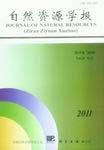Special Column:Celebration of the 70th Anniversary of IGSNRR, CAS
LI Zong-li, LI Yuan-yuan, WANG Zhong-gen, HAO Xiu-ping, LIU Xiao-jie
The remarkable growth in China’s population and economy over the past several decades has come to realize at a tremendous cost to the country’s environment, particularly around water. China’s water resources are over-allocated, inefficiently used, and grossly polluted by domestic and industrial wastes, to the point that vast stretches of rivers are dead and dying, lakes are cesspools of waste, groundwater aquifers are over-pumped and unsustainably consumed, and direct adverse impacts on both human and ecosystem health are widespread and growing. For addressing these crippling water problems, a new strategy of Interconnected River System Network (IRSN) is put forward, which is of great necessity for improving the capacity of water resources allocation, sustaining river’s heath and enhancing flood and drought control. However, up to now both the theory and technology of IRSN have still been a blank, far from the practices. Based on the further requirement of national water security and the improvement of the ecological civilization, with the new idea of human-water harmony and water resources livelihood, this paper presents a concept of IRSN, which can be defined as a river system network formed by constructing the hydraulic connection of water bodies of rivers, lakes and wetlands with various kinds of water projects, characterized by proper diversion and drainage,reasonable storage and discharge, adjustment of low and high runoff, complementary water multisource, controllable capacity, and the river system network appears to be complex, systematic, dynamic, temporal and spatial. Then the general thoughts of IRSN is proposed on the basis of the river system connection goal, the study of the IRSN can be carried out at four steps: 1) mechanism analysis, the theoretical basis of the whole study; 2) system identification and assessment, the analysis of the current status of IRSN in the researched region/basin, and the construction of Safety Evaluation Model with the complete indicators; 3) IRSN project plan, the make-out of the programmers with the requirement and problems of the society, and choosing the optimal decision from the solutions set; and 4) river system optimization and adjustment, the river system network will be reevaluated with the information of the monitoring system, and adjusted according to the principle of realizing the goal of sustainable development. According to the general thought of IRSN, some key problems worth specially concerning in the study are discussed, including different scales of IRSN, the process of river network connection, the pattern matching, the function of IRSN and the control methods.
